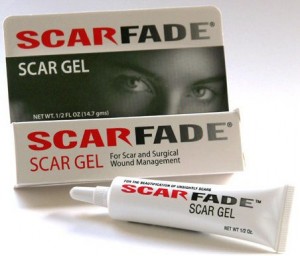Estimates from the medical community suggest that perhaps some 100 million plus individuals throughout the world develop scars every year. Of course scars differ widely in their characteristics and severity, and thus their effects on individual patients. In some cases they pose no problems whatsoever, while in others their effects can be more troubling. These effects may include pain, itching, lack of mobility, anxiety, sleep disturbance, depression and diminished self esteem.
Despite all of this, there are limited viable options available for effectively treating scars. That is not to say there is a lack of products available claiming to heal scars. On the contrary, an internet search of the topic will reveal page after page of products claiming to heal any and all types of scars, regardless of their characteristics, age or severity. However, many of these products offer little or no legitimate published data to substantiate their claims.
We suggest that when searching for a scar treatment product one should pay close attention to the ingredient list. By far, the most effective ingredient in topical scar treatment products is silicone. There are numerous studies published in reputable medical journals substantiating the safety and effectiveness of silicone products. These products are available in two main forms … topical sheets and spreadable gels.
![]() Silicone sheets have long been an accepted form of effective scar treatment by the medical community, particularly by Plastic Surgeons, Cosmetic Surgeons and Dermatologists. Silicone sheets are worn like a band aid over the top of the scar. They generally come in larger sheets that can be cut to size as needed. In some cases they can be cleaned and re-used. While medical studies confirm their effectiveness, there are some drawbacks to this form of treatment. Specifically, the sheets are cumbersome to keep fixed to the scar site, they are unsightly when used on scars not covered by clothing, and in some cases they may cause irritation of the skin, particularly in warmer climates where extreme perspiration may occur. They can be very difficult to use on certain areas of the body such as on skin folds and around facial features. Due to these drawbacks, patient compliance can become an issue. Often patients don’t wear the sheets consistently throughout the entire course of treatment, leading to poor overall results.
Silicone sheets have long been an accepted form of effective scar treatment by the medical community, particularly by Plastic Surgeons, Cosmetic Surgeons and Dermatologists. Silicone sheets are worn like a band aid over the top of the scar. They generally come in larger sheets that can be cut to size as needed. In some cases they can be cleaned and re-used. While medical studies confirm their effectiveness, there are some drawbacks to this form of treatment. Specifically, the sheets are cumbersome to keep fixed to the scar site, they are unsightly when used on scars not covered by clothing, and in some cases they may cause irritation of the skin, particularly in warmer climates where extreme perspiration may occur. They can be very difficult to use on certain areas of the body such as on skin folds and around facial features. Due to these drawbacks, patient compliance can become an issue. Often patients don’t wear the sheets consistently throughout the entire course of treatment, leading to poor overall results.
 The more recent development of silicone gel in a spreadable form is a viable answer to the problems mentioned above. These gels come in a tube and are applied like a cream. They are massaged onto the scar site a couple of times per day and once applied are generally invisible and more comfortable for the user. In addition, cosmetics or sunscreen can be applied on top of the gel. Studies have shown these gels to be effective on par with silicone sheets and patient compliance appears to be easier to achieve. For these reasons most, but not all patients prefer silicone gel over silicone sheeting.
The more recent development of silicone gel in a spreadable form is a viable answer to the problems mentioned above. These gels come in a tube and are applied like a cream. They are massaged onto the scar site a couple of times per day and once applied are generally invisible and more comfortable for the user. In addition, cosmetics or sunscreen can be applied on top of the gel. Studies have shown these gels to be effective on par with silicone sheets and patient compliance appears to be easier to achieve. For these reasons most, but not all patients prefer silicone gel over silicone sheeting.
It should be noted that while several topical treatments are available on the market, they contain varying degrees of the key ingredient, silicone. Some have no silicone at all while others are nearly all silicone. One should be careful to check that the product they select is composed primarily of silicone. It is ok and perhaps good for there to be a small percentage of other ingredients such as Vitamins, Sunscreens or Co-Enzyme Q10 as well.
You have scars, we have solutions.
